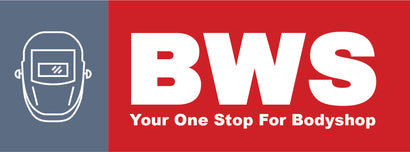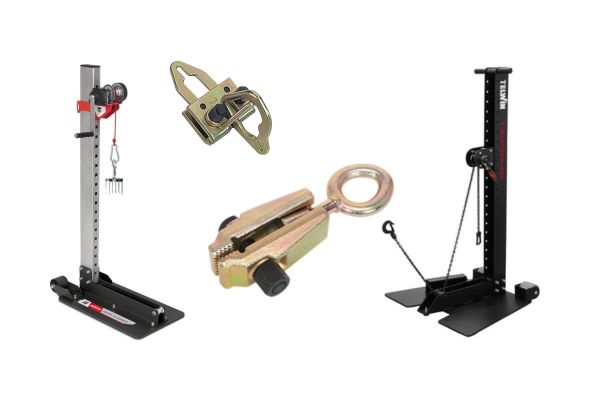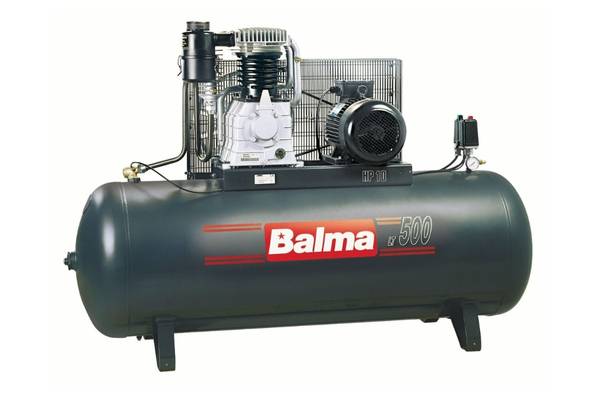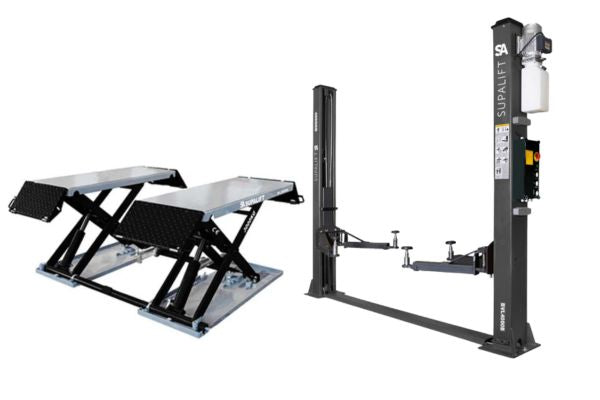Need Some Help? 0161 223 1843
Need Some Help? 0161 223 1843
BODYSHOP
WORKSHOP
WELDING
TOOLS
SAFETY

Can you TIG weld on a car?
June 16, 2020 6 min read
YES and NO! TIG Welding older steel vehicles YES! TIG Welding Steel is preferable to MIG MAG welding due to the torch polarity (see DCEN below) as it reduces Galvanic Corrosion.
TIG Welding of aluminium on a vehicle NO! This is due to the HF possibly damaging the vehicle's electronics.
TIG or TAG, GTAW the principle of the process is that arc is created on the workpiece by electrically stable current using a tungsten electrode and the filler material is added manually by yourself to the weld pool.
Its generally accepted as a high-quality welding process due to the welder being able to remove impurities in the weld pool before adding the filler. This is even more important when it comes to aluminium welding as this removal of impurities enables strong structural welds.
WHAT DOES TIG or TAG MEAN?
It Means Tungsten Inert Gas Welding (GTAW if American).
The "T" refers to the electrical arc and how it's transferred to the workpiece. The power is generally supplied by a Constant Current power source that is then transferred to the workpiece via a "Tungsten" electrode. Constant Current just means the power source provides a stable current while welding even if the arc length at the torch is increased. Specific tungstens are used for specific processes and there are lots of different types.
Tungsten electrodes are made up of either pure tungsten or a mix of other rare-earth elements and oxides. Each is colour coded to help you identify them. The two most popular are:
| Name | Colour | Mode | Use |
| 2% Thoriated | Red | DC | Ferrous |
| 0.8% Zirconiated | White | AC | Aluminium |
There are many others available but as a beginner just wanting to do some standard welding the above two will get you started.

The tungstens also come in different sizes to reflect the different current ranges they can carry. Also the larger the tungsten the larger the welding arc. If you're trying to do a small stainless steel welding job with a 3.2mm Thoriated Tungsten it's going to be made more difficult due to the size of the tungsten.
| Size | Current Range AC or DC (Approx) |
| 1.6mm | 60-150 |
| 2.4mm | 150-250 |
| 3.2mm | 225-330 |


HOW TO PREPARE MY TUNGSTEN!
We would recommend dressing of all tungstens before welding by grinding the tungsten on a grinding wheel to a point. The grinding marks should run to the point.
Grinding to produce scratches that go to the point of the tungsten gives a more stable arc while scratches that go around the tungsten point can make the arc unstable with a tendency to wander.
ALWAYS use a dedicated grinding wheel with no contaminants and wear a mask to stop particle inhalation especially fro Thoriated as its a radioactive isotope.

AM I WELDING ACTIVE OR INACTIVE?
The centre and last letters refer to the gas used while welding and whether it's being "Inactive: or "Active" in what it does to the weld pool.
Tungsten Inert Gas and Tungsten Active Gas
The TIG gas used is pure Argon as it gives a stable arc and protects the weld pool without altering the weld pools characteristics. Pure argon is also relatively cheaper.
TAG is where we generally mix another gas with Argon that produces gas mix that does something to the weld pool making it "Active". The most common Active Gas for TAG is Argon/Hydrogen although this could include Argon Helium. The addition of the Hydrogen or Helium creates a hotter arc with better penetration. These types of gases are though are generally more expensive and so tend to be used for special applications. For general user whether your welding stainless steel or aluminium, Pure Argon is Best.
WHATS THE CORRECT GAS FLOW?
The correct gas flow is important for success in TIG welding. The shielding gas flow is typically 15 to 25 CFH and this will cover most applications. Too much flow creates arc swirl. Obviously, if you increase the size of your weld cup or ceramic then you may need more gas flow.
I would recommend you also set your welding programme to have a minimum PRE flow gas of 0.2 seconds so that you have gas at the weld prior to the arc starting.
A POST flow gas time is determined by dividing the amps used by 10. Or to make it easier to have at least 10 seconds to allow cooling of the weld pool and to help cool the ceramic.
WHAT IS DCEP?

MIG MAG torch polarity is DCEP (DC Electrode Positive) meaning the pinch point for the current is on the tip of the welding wire, hence it blows. The weld bead created is also positive and yet the vehicle is grounded negative. This creates GALVANIC CORROSION due to the difference in potential of the weld bead and the frame of the vehicle.
WHAT IS DCEN?

TIG welding torch polarity is DCEN (DC Electrode Negative). The Electrons, therefore, flow from the tungsten to the workpiece creating a weld that is stronger and less prone to corrosion. (steel only)
WHAT DO WE USE AC OR DC FOR?
Direct Current is used for ferrous welding and stainless steel because the steel heats up easily so we only need to use half of the sinusoidal wave.
Aluminium, on the other hand, forms an oxide naturally to self protect itself from the atmosphere. The best way to describe it is that it grows like mould over the surface of the aluminium until fully protecting it. It's clear and you cant see it, much like a clear paint Laquer. This oxide is ceramic and has a considerably higher melting point (2000C) compared to aluminium (700C). Therefore if it wasn't removed from the weld pool before or during welding it would produce lots of oxides which are unwanted in welding.
We need to remove this oxide layer and the Alternating Current (AC) wave helps us to do this by removing oxides when the wave switches from positive to negative. This is also referred to as AC Balance. More of this later. You can also read about a TIG welders Functions in another post by clicking HERE
WHAT IS HIGH FREQUENCY?
Is the term used for the use of an HF signal to enable the arc start-up. The HF enables the current to jump an air gap and this reduces tungsten contamination. This is preferable compared to scratch start setups. The HF is used to start the weld as in DC welding or in the case of AC prolong the arc (keep it going).
Simply put we use HF start for DC (steel) welding and continuous HF for AC (aluminium) welding.
HF is a High Voltage Low Current wave that is induced onto the electrode enabling the air gap between the tungsten and the workpiece to become ionized (conductive). This voltage is at High-Frequency typically 1-2Mhz
This ionized air then enables the main welding current to travel from the tungsten to the workpiece forming you welding arc.
The trouble is this HF can also induce itself onto nearby conductive objects as the HF forms a largely invisible bubble emanating from and around the torch tungsten.
If the workpiece (car) is grounded then this may not be a problem but usually, the vehicle is on wheels or on a jig bench which means it's insulated from earth.
This HF bubble is bad for sensitive electronics and so could damage them.
You could use a battery protector as shown HERE but there is no guarantee that this will stop it.
WELD PREPARATION
To TIG weld on mild steel panels, your main focus should be on panel cleanliness and joint fit. Any zinc or galvanising coatings should be removed prior to welding.
Joint fit is important due to the thickness of the materials as car body panels are always less than 1.0mm. Either lap the panels then simply melt the top panel into the bottom in what we call autogenous welding (no filler is added). This is great for keeping the weld profile down and due to the thickness of the material it also means you can travel faster-reducing distortion to the panel.
If you simply must weld a gap then its advisable to put your filler into the gap and simply melt it as you go along. This especially applies to the quarter panel "butt" welds. Remember to keep the run of the weld to a minimum to reduce heat and possible distortion. Take your time. The longer it takes to weld the less the distortion.
TIG welding mild steel car body panels are acceptable especially in older more classic vehicles as it reduces the possibilities of galvanic corrosion.
For more information on TIG welding and for training information please contact us.
With Thanks:
Banner From Fronius.com
DCEP DCEN pictures Fronius.com
Leave a comment
Comments will be approved before showing up.














































